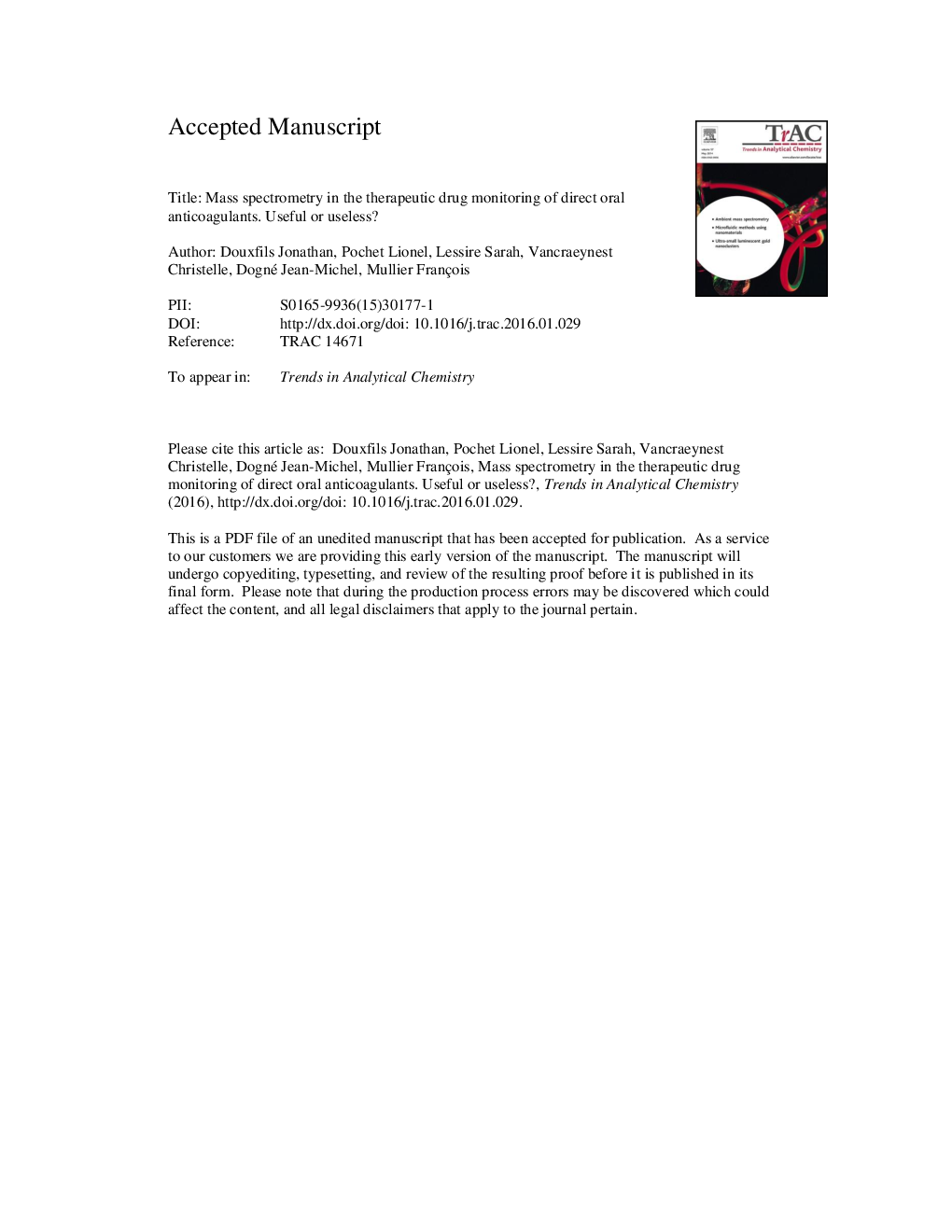| Article ID | Journal | Published Year | Pages | File Type |
|---|---|---|---|---|
| 5141751 | TrAC Trends in Analytical Chemistry | 2016 | 31 Pages |
Abstract
Direct oral anticoagulants (DOACs) are now widely used in various thromboembolic diseases. Although routine therapeutic drug monitoring is not required, cumulative evidence suggests the usefulness of point measurement in some situations. Mass spectrometry is highly sensitive and specific and is considered the gold standard for the accurate measurement of DOAC plasma concentrations. However, lack of 24/7 availability, labour-intensive sample preparation and slow turn-around time of the analysis reduce its usefulness in emergency situations. Several coagulation or chromogenic assays have been introduced to estimate the plasma concentration of DOACs. In daily practice, these assays are recommended in most cases since they provide sufficient agreement with mass spectrometry over a broad range of concentrations. However, the assays are not perfect, and improvements are required to increase their sensitivity and/or specificity. This article focuses on the pros and the cons of mass spectrometry and specific coagulation/chromogenic assays.
Keywords
Related Topics
Physical Sciences and Engineering
Chemistry
Analytical Chemistry
Authors
Jonathan Douxfils, Lionel Pochet, Sarah Lessire, Christelle Vancraeynest, Jean-Michel Dogné, François Mullier,
